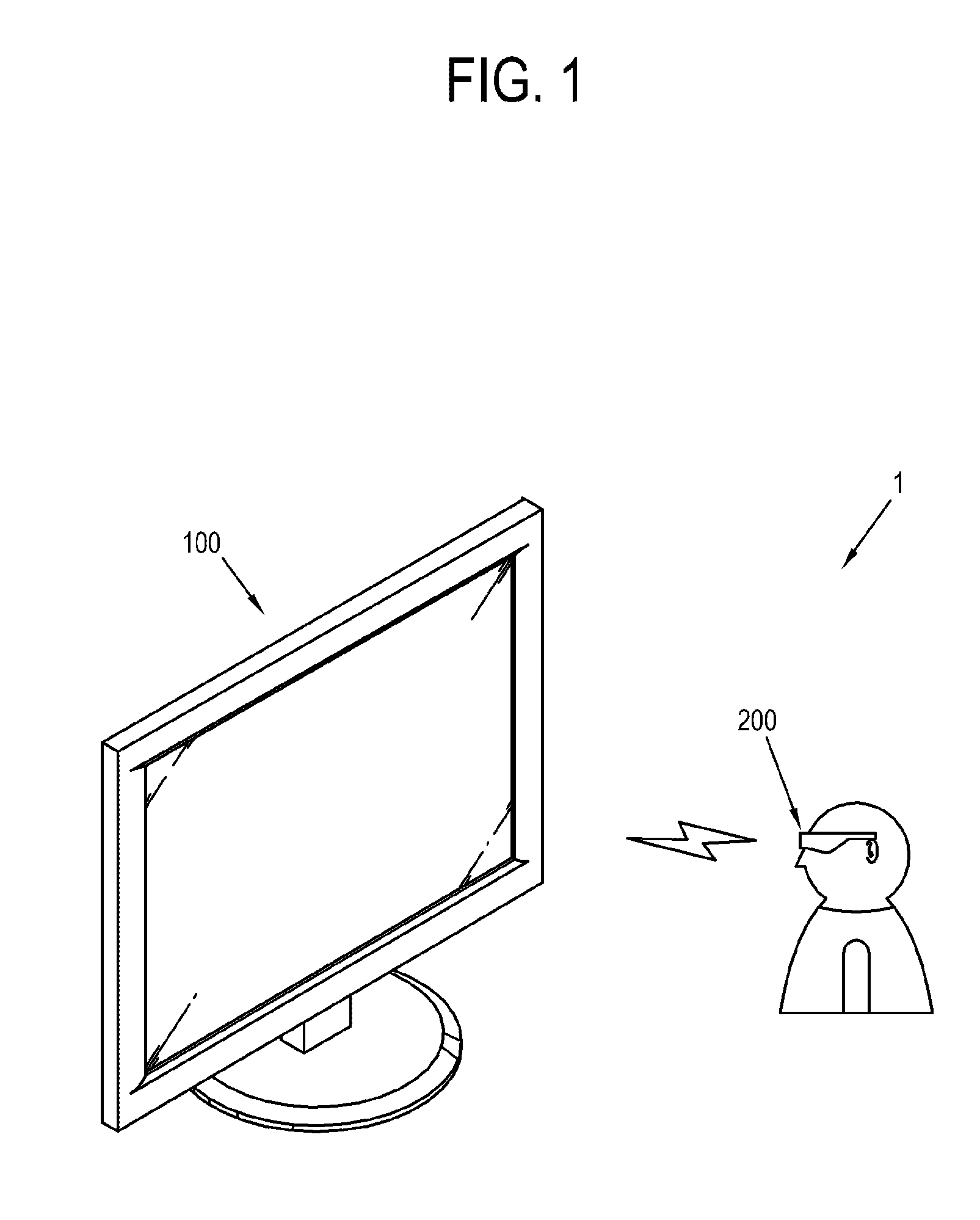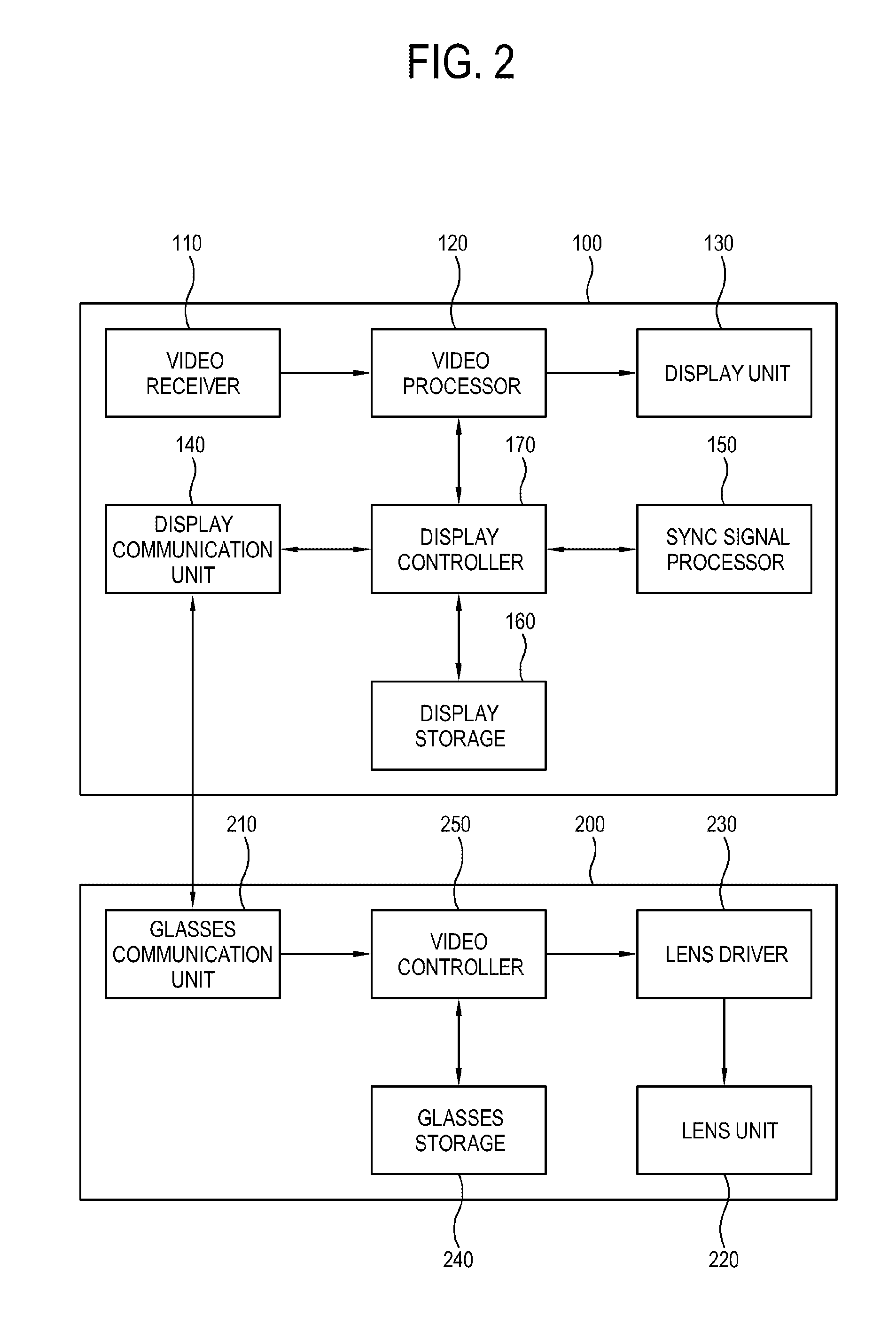Display apparatus, control method thereof, shutter glasses and control method thereof
- Summary
- Abstract
- Description
- Claims
- Application Information
AI Technical Summary
Benefits of technology
Problems solved by technology
Method used
Image
Examples
Embodiment Construction
[0053]Below, exemplary embodiments will be described in detail with reference to accompanying drawings.
[0054]FIG. 1 shows an example of a display system 1 according to a first exemplary embodiment.
[0055]As shown in FIG. 1, the display system 1 in this exemplary embodiment includes a display apparatus 100 that processes a video signal input from the exterior and displays it as an image, and 3-dimensional (3D) glasses 200 that operate to selectively transmit or interrupt light if an image displayed on the display apparatus 100 is a 3D image.
[0056]The display apparatus 100 receives a video signal from an external video source (not shown). Such a video source is not limited, and thus the display apparatus 100 may receive video signals from various video sources such as a computer main body (not shown) that generates a video signal with a central processing unit (CPU, not shown) and a graphic card (not shown), and provides it locally; a server (not shown) that provides a video signal via...
PUM
 Login to View More
Login to View More Abstract
Description
Claims
Application Information
 Login to View More
Login to View More - R&D
- Intellectual Property
- Life Sciences
- Materials
- Tech Scout
- Unparalleled Data Quality
- Higher Quality Content
- 60% Fewer Hallucinations
Browse by: Latest US Patents, China's latest patents, Technical Efficacy Thesaurus, Application Domain, Technology Topic, Popular Technical Reports.
© 2025 PatSnap. All rights reserved.Legal|Privacy policy|Modern Slavery Act Transparency Statement|Sitemap|About US| Contact US: help@patsnap.com



